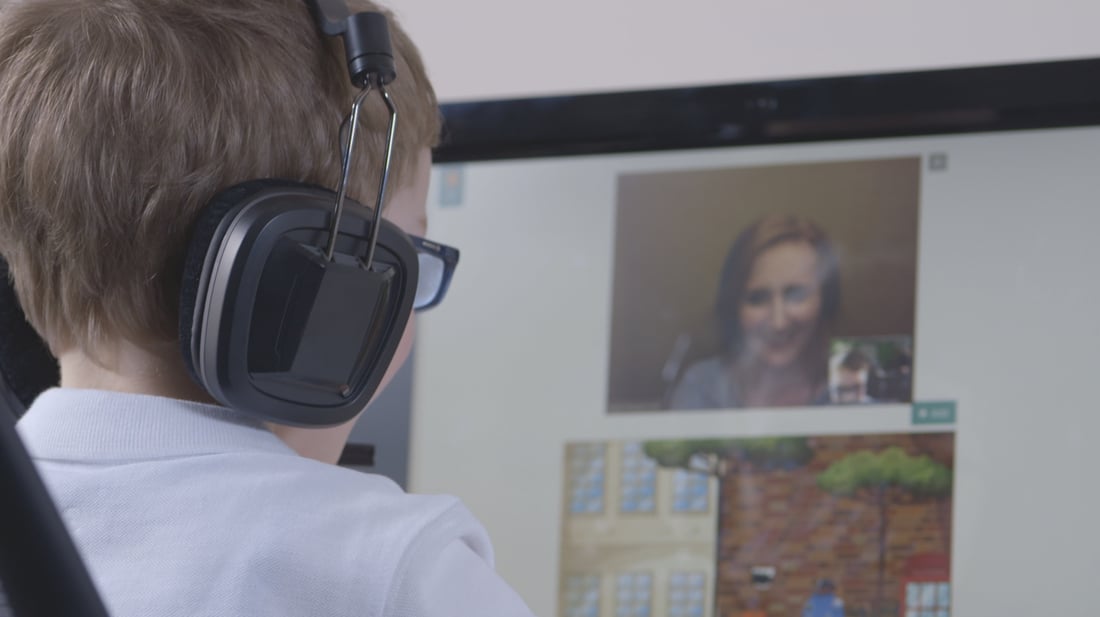With the dust settling after Bett 2018 we all left with one clear message ringing in our ears – “technology is the future”. It’s not just in teaching that innovations are happening but in those services that support teachers to meet the needs of ALL their pupils. Services like speech and language therapy, literacy interventions, mathematics and art and design. Indeed, when it comes to Special Educational Needs (SEN) interventions there is one trend emerging, namely ‘tele-practice’.
Tele-practice describes face-to-face speech and language therapy delivered remotely through a computer or tablet. Some therapists use technology like Skype, FaceTime or Zoom to connect the therapist to the client through an online video stream.
In this digital era technology means teachers and therapists can be more efficient, saving valuable time and resources and meeting the needs of more and more pupils using online solutions. Often, being online means data can be recorded more accurately leading to more robust outcome data. Better outcomes mean you can more accurately measure the impact of interventions.
If you work in schools you know the demand for speech and language therapy services is increasing, waiting lists are getting longer and many young people are going without the support they need. I don’t want to be all doom and gloom about it. In fact, quite the opposite! I think that in this tricky climate we are more inclined to seek out innovative solutions that enable therapists and teachers to be more effective and efficient.
What are the benefits of tele-practice?
No more clinic visits
Tele-practice can be done anywhere there is a computer and an internet connection. Expensive trips for children and teaching assistants to the clinic is no longer necessary. Therapists are not required to travel to school which means they aren’t held up in traffic. This means fewer missed appointments and more consistent specialist care for pupils. In these tricky situations is where innovation is born and this is where telepractice comes in. By implementing this model of service delivery, a lot of barriers can be dismantled.
Children with SLCN who live in rural and remote areas are often at a disadvantage when accessing speech and language therapy (Mashima & Doarn, 2008)
Appointments on your time
Unpredictable events happen at school which means appointments need to be rescheduled. Last minute Christmas play rehearsals, pupil illness, behaviour outbursts! It’s the nature of working in a school. It’s not always convenient to drop everything because the speech therapist has arrived in school.
The flexibility of tele-practice means you are able to arrange appointments for when they are convenient for you. It also means if you need to squeeze in an extra phonics session before your observation next week you can reschedule appointments online without disruption to the pupils or the therapist.
Children, parents and schools have expressed the need for more flexibility in when and how we deliver therapy (Mathers, 2016).
Access to specialist expertise
Yes all therapists have a Bachelor’s degree or Masters degree in Speech and Language Pathology and Therapy but some have extra training too in specialist areas like deafness and hearing impairment, autistic spectrum disorders, social emotional and mental health and more.
Specialist appointments can come with long waiting lists and even longer travelling times to appointments. Whereas with telepractice, you can see a specialist from anywhere in the UK. You could be in North Yorkshire and they could be in central London. No more postcode lottery!
Pupil engagement
More than ever our pupils are looking towards digital solutions for learning and for leisure. A great wedge of photocopied resources is just not going to capture the attention of children in need of speech and language therapy support. Nor is it relevant or functional to the way they live their lives. The bottom line is, speech and language interventions need to enable functional communication for that young person. Therapists need to be working in a way that is relevant, motivating and captivating in order to support and encourage learning new skills.
Now, there is no denying how captivating online games are and how much pupils love playing them. The more engaged a pupil is with the process, the more they will learn. Having online resources means they can also be shared easily and practiced between sessions without poor Teaching Assistant’s having to spend hours colouring and laminating photocopied pictures.
It’s even supported in research – Folkins (2016) says, turning standard therapy resources into online games increases engagement and motivation in therapy, in turn helping improve outcomes and achievements.
Confident Staff
By observing sessions, support staff will see the Speech and Language Therapist model ways to support the pupil. Most importantly learning can be carried over into everyday situations. This helps staff to feel empowered (Parfitt, 2016).
Research shows that learning support assistants feel more involved in telepractice than with traditional therapy sessions (Mathers, 2016). Because they are delivered online, sessions can be easily recorded and there is the opportunity for parents to access support materials or reports from sessions more easily. Communication with parents is found to be a key limitation of working as a Speech and Language Therapist in school so telepractice has the potential to break down these barriers (Tucker, 2012).
Now, all of these benefits are really great BUT, I know you’re all thinking… does it really work? The short answer is yes. Research shows that therapy delivered via tele-practice gains results that are just as good or even better than traditional face-to-face therapy (Edwards et al., 2012).

